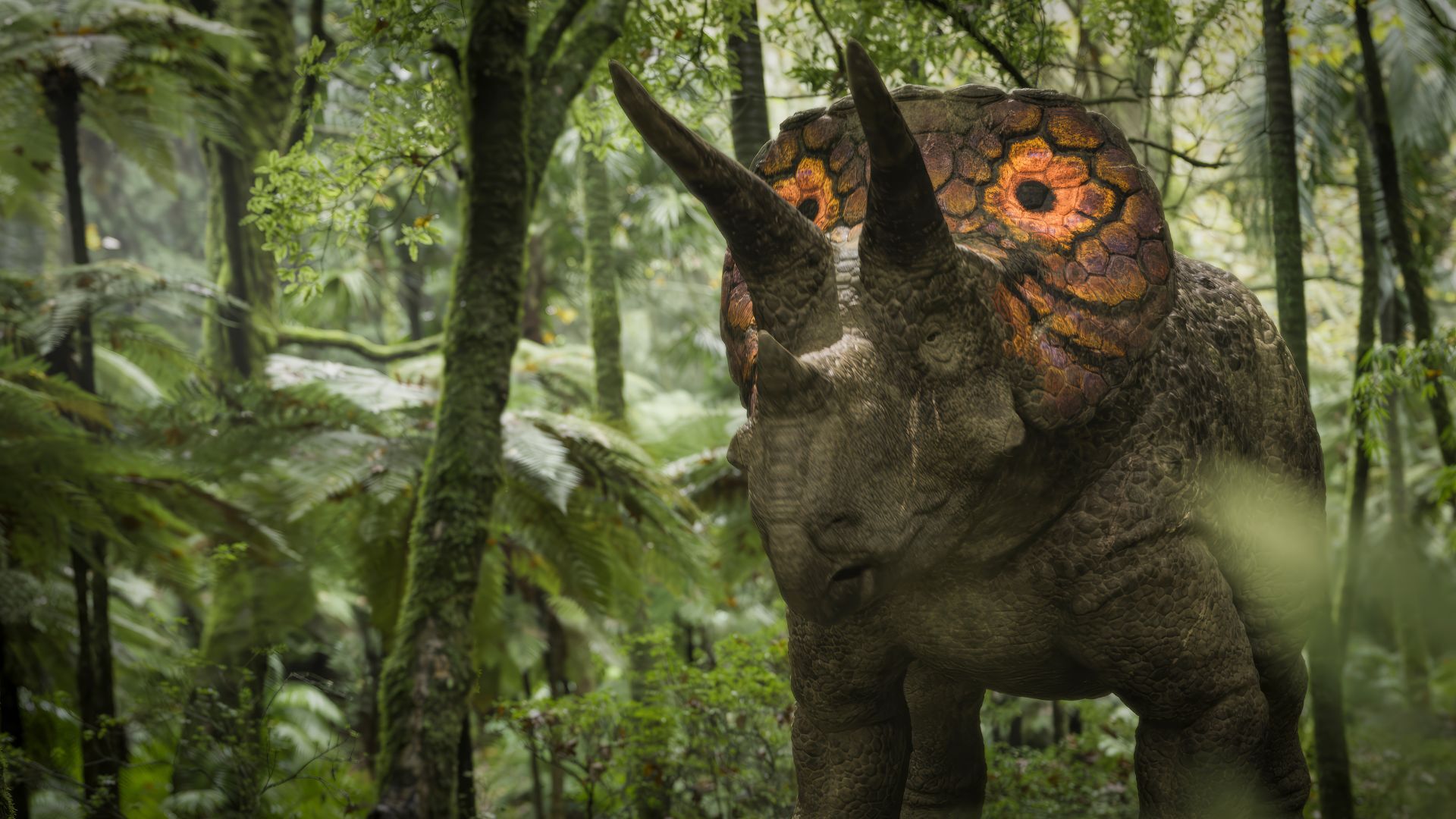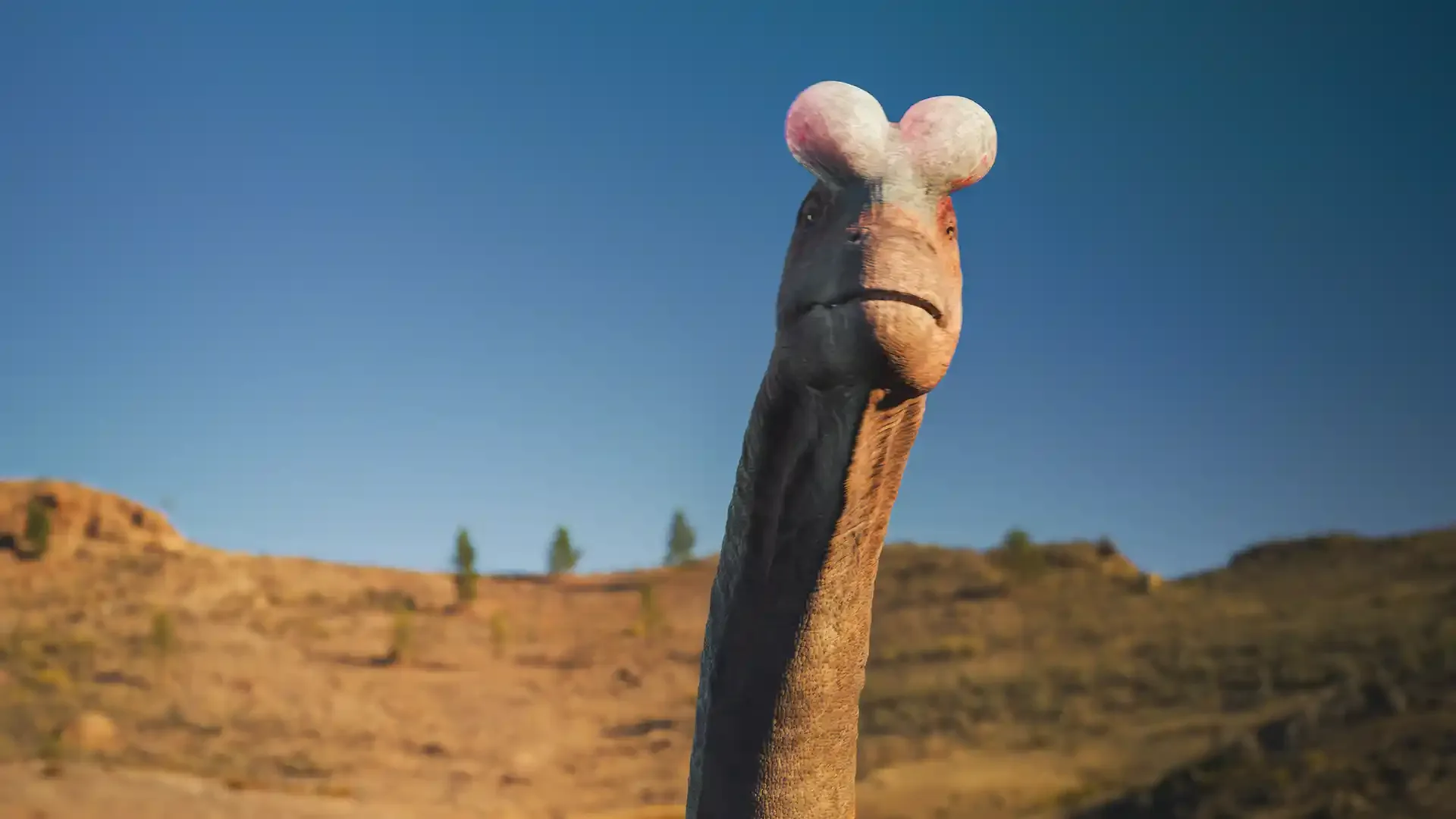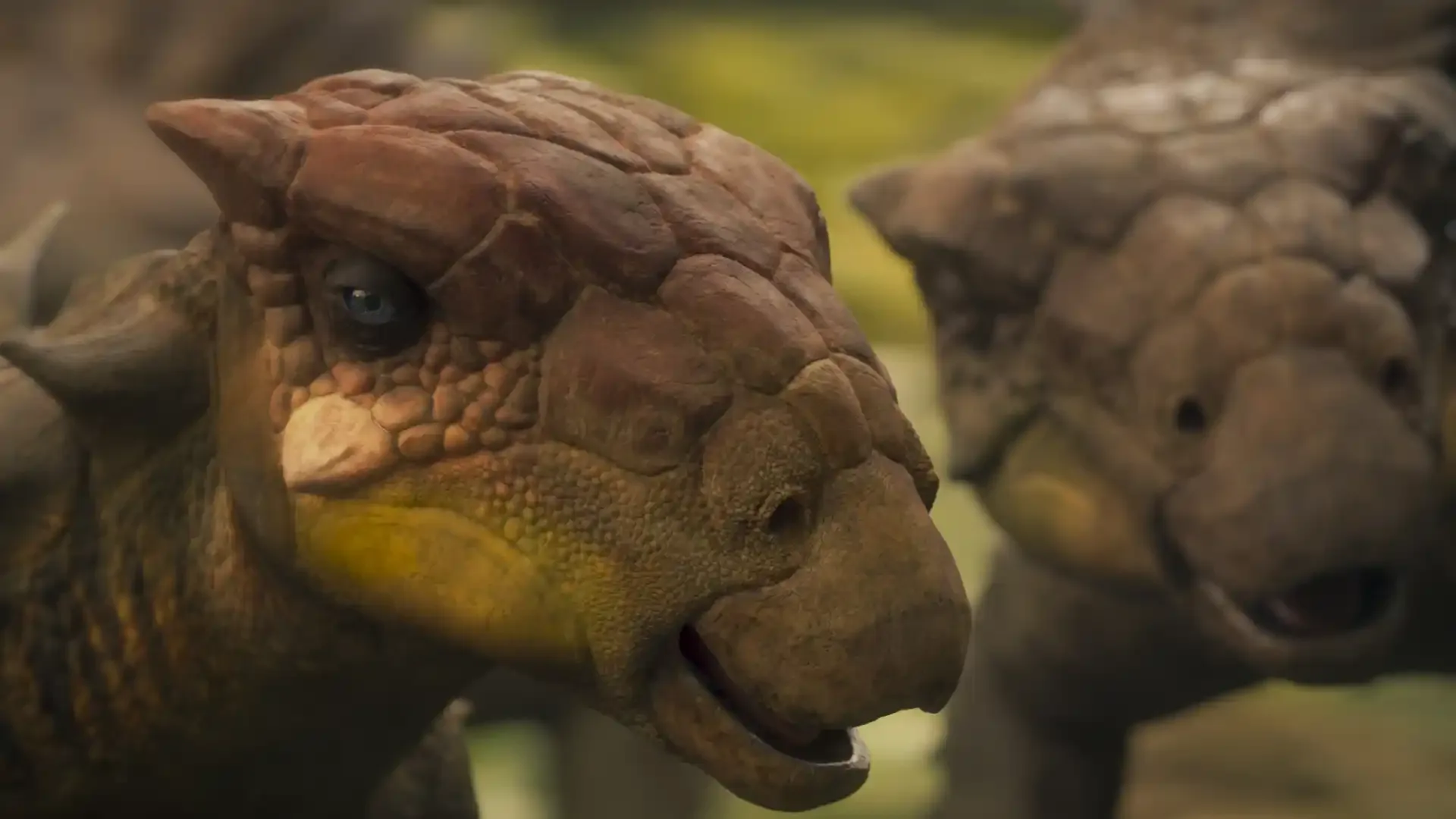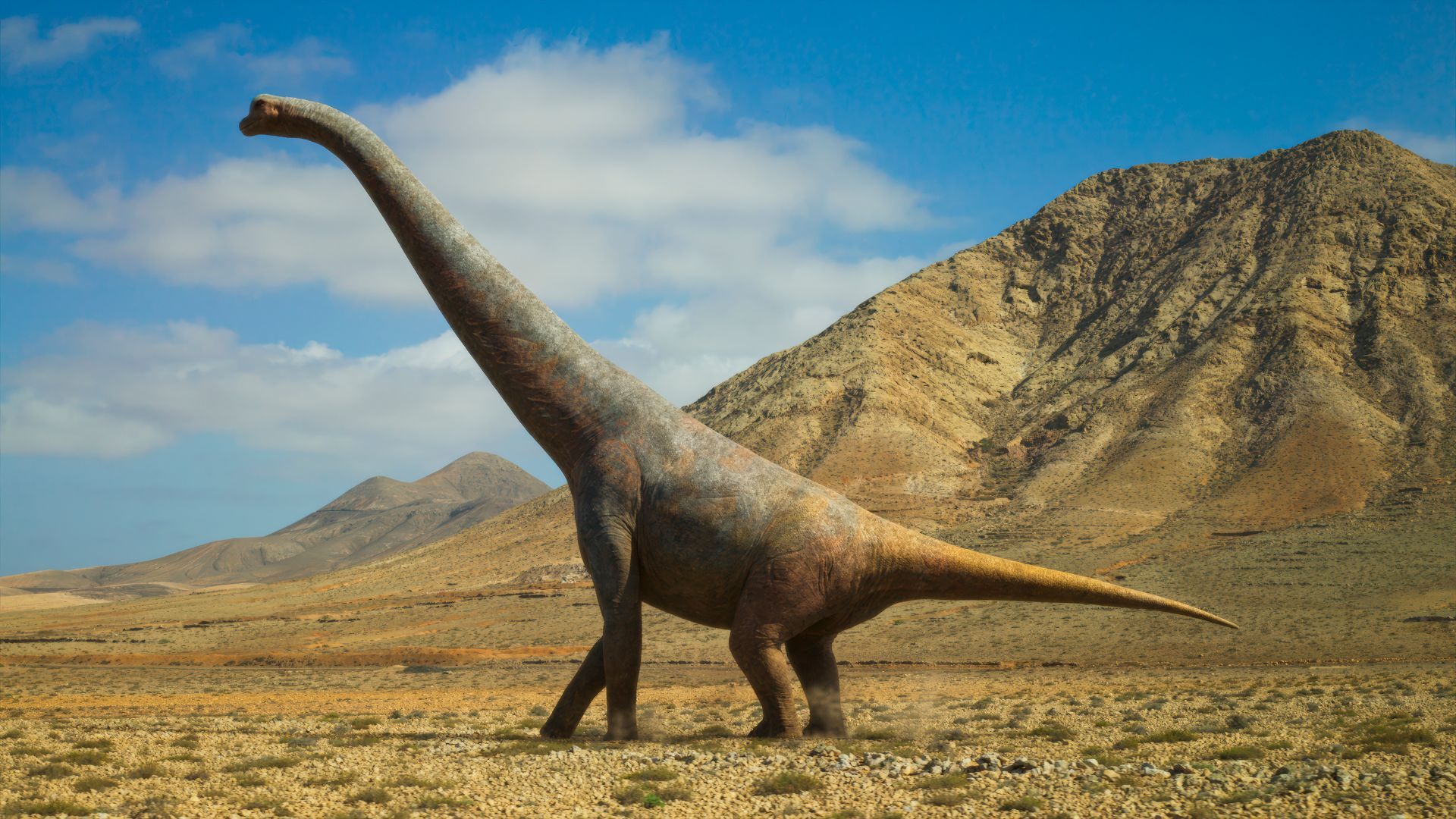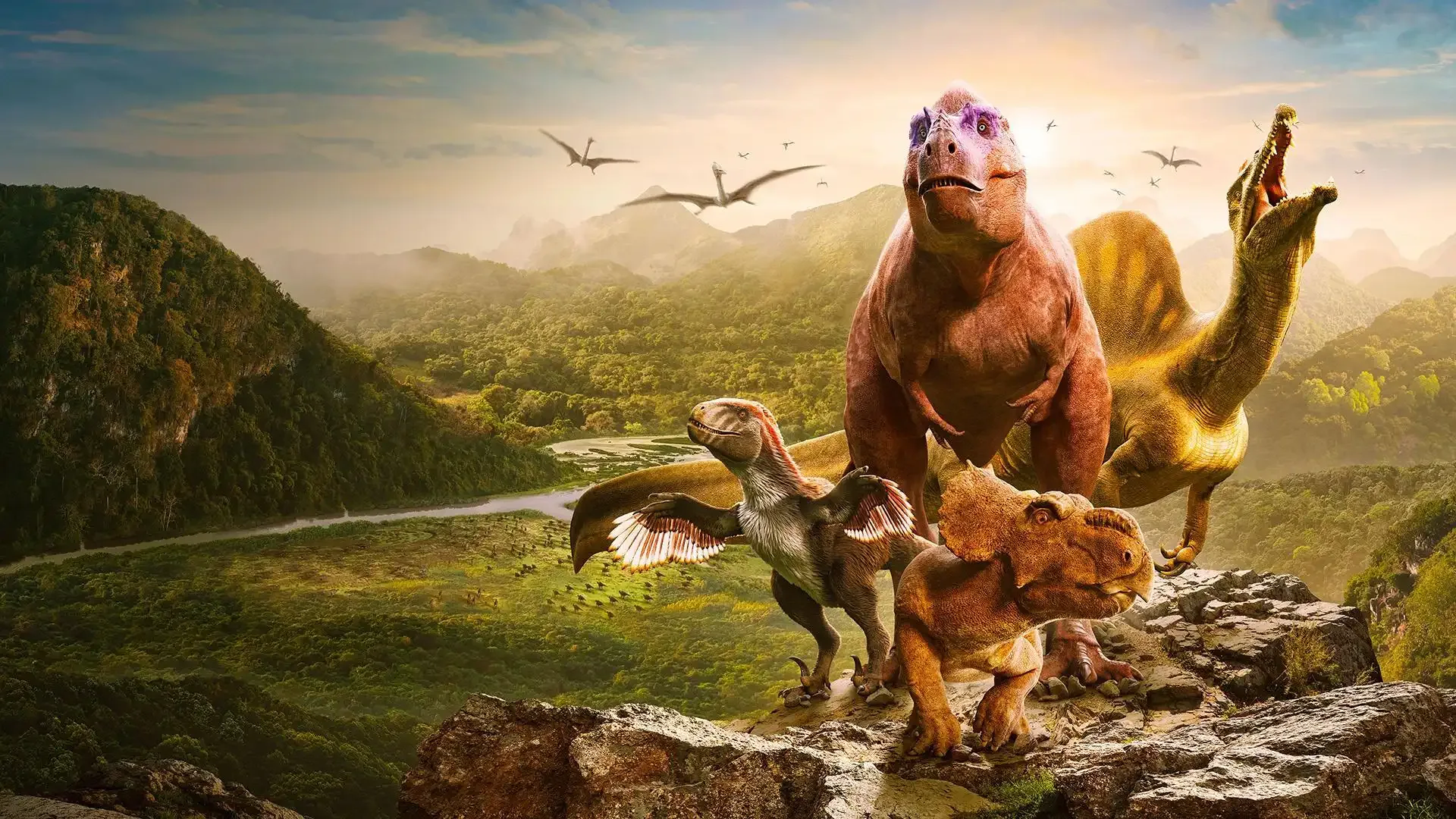Meet Lusotitan: Walking with Dinosaurs
After millions of years, six incredible dinosaurs are coming back to life. In “Walking with Dinosaurs” on PBS, paleontologists discover the lives behind the fossils, using the latest scientific methods to uncover stories of survival, triumph, family and even romance. Get the stats on your favorite giants to see how they stack up on this prehistoric stage.
About Lusotitan
Closely related to Brachiosaurus, Lusotitan was one of the largest dinosaurs to have ever lived — but not one of the friendliest. Despite its soft spot for solitude, this species had incredible adaptations for communication, including a unique courtship ritual and feet big enough to send and sense seismic waves.
- Period: Jurassic (150 million years ago)
- Location: Portugal
- Diet: Herbivore
- Behavior: Solitary; territorial
- Threats: Massive bodyweight; rival males

How Big Was Lusotitan?
As the tallest species in “Walking with Dinosaurs,” Lusotitan towers over humans and living animals alike. According to researchers, it would have won a fight with any of the show’s other six dinosaurs!
Support your local PBS station in our mission to inspire, enrich, and educate.
Highlights
Lusotitan was a lumbering giant, only moving about 5 miles per hour at maximum speed. Fortunately, as one of the largest dinosaur species found in all of Europe, it was bigger than any of the area’s predators and didn’t need to run.
Of course, that didn’t mean life was always easy. If an injury or misstep took this giant off its feet, it would have a hard time getting back up due to its massive body weight. That made it vulnerable to hungry neighbors waiting for an easy meal. The risk was even greater for males, who often picked fights over females — and all because the ladies were only interested for a few weeks per year.
Despite all the relationship drama, Lusotitan had communication down to an art. Like modern-day elephants, one stomp could send seismic waves through the earth, where potential mates would pick up the message with specialized nerve endings in their feet. Paleontologists also believe Lusotitan had a nasal resonating chamber in its head for loud sounds or inflatable displays.
And speaking of displays, Lusotitan was a giant in that realm, too. It’s thought to have used its long neck and tail in a courtship dance designed to appeal to potential mates, who paleontologists think were only looking for the biggest males so their offspring had a better chance of survival.
Fun Facts about Lusotitan
- Lusotitan likely displayed a behavior called osteophagia, supplementing its herbivorous diet with skeletons, much like giraffes do today. Bones are rich in the minerals necessary to repair giant bodies like these.
- Thanks to their long necks, these dinosaurs could eat fresh, needle-like leaves at the tops of conifer trees — but they swallowed without chewing.
- Lusotitan weighed as much as an adult humpback whale — up to approximately 40 tons!

The best of PBS, straight to your inbox.
Be the first to know about what to watch, exclusive previews, and updates from PBS.
Walking with Dinosaurs
Explore More from Walking with Dinosaurs
